RI Coalition to End Homelessness releases results of the 2024 Point in Time Count
This year, 2,442 persons were experiencing homelessness in Rhode Island, nearly a 35% increase from last year's number of 1,810. Homelessness in RI continues to worsen.
Jennifer Barrera: We're going through the 2024 Annual Homeless Point in Time count and HIC (Housing Inventory Count). These are reports that the HMIS (Homeless Management Information System), which is housed here at the Rhode Island Coalition to End Homelessness, is required to submit on behalf of the entire continuum. HUD compiles this data throughout the year and in late December, they issue the AHAR (Annual Homeless Assessment Report) to Congress.
Our methodology: Every community can choose a different methodology. At the Coalition we conduct an unsheltered blitz canvas, which means that on one night, we canvas and survey anyone that we encounter outside. The other part of the methodology is the shelter count, which is pulled directly from our HMIS database.
We conduct the shelter survey the week after that one-night count. So if we didn't encounter someone on one night, we can survey them at those service sites. The methodology hasn't changed. There were a couple of years during COVID when the collection period for the surveys was extended due to Covid precautions, but this methodology is the same as it was last year.
We do a lot of work in the following weeks and months after the night of the PIT. We do our due diligence to make sure that what we're submitting is accurate and de-duplicated. For every survey, we get a full first name, last name, social security number, and date of birth. We have three points of identifying information that we use to de-duplicate. If I did a survey at 9:00 pm with someone and then they headed into a warming center, we would get that name come up on both lists. That's why we de-duplicate, so there's no inflation of the numbers. There's a human person behind every single number on these charts
We do the PIT so we can compare from year to year. We're going to talk about some five-year comparisons to show the changes in both the Point in Time count and the Housing Inventory Count. We use this data for planning purposes. Various regions use the data to assess what resources and conditions are happening in their communities. Congress uses the data to measure needs within communities and to calculate funding appropriations.
This year, 2,442 persons were experiencing homelessness in Rhode Island. That's an increase from last year's number of 1,810. Of those 2,442 people, we had 1,565 that were individual adults. We had 877 people that were in families, a mix of both adults and minor children. 142 persons were youth, what we call transitional age, to ages 18 to 24 years old. 756 had a chronic homeless designation. To be chronic, they have to meet a certain length of time or number of homeless episodes that equal a year and have a documented disability. Lastly, 130 people reported that they were veterans.
That chronic homeless number has been growing throughout Covid because folks are experiencing homelessness longer. They're staying in shelters longer because there are fewer options for folks to get out of a shelter. We have a moderately high population of folks with a disability.
Jennifer Barrera: This shows trends over time. This is the overall number from last year, an almost 35% increase in people experiencing homelessness from last year. The number went from 1,810 to 2442. It's a pretty big increase.
The unsheltered number this year is 534, which is exactly 200 persons more than we counted this time last year. It represents a 60% increase from last year, but it represents a 652% increase over the last five years.
Jennifer Barrera: Here's our unsheltered heat map. The color variations here display the number of people surveyed. As expected, the three entitlement cities of Pawtucket, Woonsocket, and Providence are the three with the highest number of folks surveyed, but all the areas shaded in green were places where our teams went out and surveyed folks who were experiencing unsheltered homelessness.
Jennifer Barrera: 877 unsheltered families. That number has gone up this past year because we lost a large number of hotels that were funded through DCYF (Rhode Island Department of Children, Youth, and Families) and FCCP (Family Care Community Partnerships) resources. We had a large number of families in the shelter. There was one family that was unsheltered on the night of the Point in Time count.
Here are the adult-only households. As you can see, that is also growing. This year we did have a significantly higher number of adult shelter resources come online. When we get into the Housing Inventory Count, you'll see we had more than 600 additional shelter beds in use this year versus last year.
Jennifer Barrera: This is showing the transitional age youth and unaccompanied youth numbers. I want to caution you here. Our transitional-age youth and unaccompanied youth numbers did increase, but this is not an accurate representation of transitional-age youth who are experiencing homelessness or housing insecurity. This coming fall our folks from the Coalition will be conducting a youth-specific Point in Time count. Transitional-age youth are very hard to count because they are sometimes hanging out with friends or finding other circumstances. Youth aged 18 to 24 don't always present outside in a camping or unsheltered location. The youth Point in Time count will give us a better picture of all the youth who are experiencing homelessness. But we know this number did increase. In the traditional Point in Time count the number is significantly up, to 143 this year.
Persons with a rapid rehousing voucher. We add this every year. It's not part of the Point in Time count. Still, this number represents people who have been flagged in our Coordinated Entry System as someone eligible for housing because they were experiencing homelessness. We referred them to a provider who has a subsidy for rapid rehousing. These folks were assigned the subsidy, but they've not yet found a unit. The significance is that they are counted as unsheltered the night of the point in time count and that they have a resource that has not yet been put to use. They can't use their subsidy because they can't find a vacant unit to apply it to. That is something that our Continuum of Care Board of Directors and other key system funders want to know for the night of the Point in Time count.
Jennifer Barrera: Every year we do an equity analysis. We want to know if people are experiencing homelessness at a disproportionate rate from people who are living below the property level. Here in Rhode Island, this year was particularly challenging because, in October of last year, HUD changed the race and ethnicity definitions. We did our very best to map the 2020 United States census data with our HMIS data and figure out if people were experiencing homelessness at the same rate as folks in Rhode Island living below the poverty level. What you can see is no surprise. Black and Hispanic individuals and families are experiencing homelessness at a much higher rate than [white] folks living in poverty here in Rhode Island.
HUD included ethnicity and race together with their data change, but the census separates people who identify as Hispanic, Latina, Latino, or Latinx. So we tried to make a comparison. There is a slightly higher number of families experiencing homelessness who identify as Hispanic, Latina, Latino, or Latinx than folks living below the poverty level. This is super hard but we continue to monitor the race and ethnicity of folks experiencing homelessness.
Jennifer Barrera: Our next few slides talk about sheltered versus unsheltered. We want to make sure that unsheltered people, even though it's disproportionate compared to the population of Rhode Island, are getting equal and fair access based on their race and ethnicity.
What this is showing, even though those are very slim pie pieces, is that access to shelter in Rhode Island is fair and equitable based on who's outside. That's a real highlight of our Point in Time count. Some communities are struggling to make sure that various racial and ethnic groups are accessing shelter and housing equally and fairly.
We're also always looking to make sure that gender access is equitable. As you can see, it's pretty equitable. There are a disproportionate number of males outside, but that is not necessarily a function of shelter access.
Jennifer Barrera: The Housing Inventory Count. There were 650 more emergency shelter beds in use for this Point in Time count. This is why that number is important. The number of people outside increased by 200. The number of beds in use increased by 650. If those beds weren't in place - if we had the same amount of emergency shelter beds as last year - the number of people outside would've increased to 850. We have to look at both the unsheltered number and the sheltered number to identify the total growth of homelessness in Rhode Island. Also, through the housing inventory count, we are not only measuring the emergency shelter stock but also looking at the different types of beds that are online in our system.
The important reason is that when we place unsheltered homeless folks into beds, we want to make sure that we've got a variety of different housing interventions. We may serve a family with some income and good life skills, but had a crisis and just need a little time and a little help with rent to get back on their feet - that would be rapid rehousing. We can issue them a subsidy and they can get assistance for six months, 12 months, or up to two years, and then 82% of those folks move on. They stabilize. We never see them again. We want to make sure that we have housing interventions that make the best use of our funds and resources. Some folks require more supportive services and longer-term assistance and we would use our permanent supportive housing stock.
Here we're looking at transitional housing. Transitional housing has been largely unfunded in Rhode Island. It was reduced by 11 beds. The beds available now are primarily for veterans. Veterans have some transitional housing programs called the Grant and Per Diem (GPD) Program and some of our domestic violence service providers have transitional housing. But that decrease in transitional housing has been offset by rapid rehousing units. This is a real boon for our state. 202 more rapid rehousing units were online and in use the night of the Point in Time count. That is in large part due to the efforts of the Continuum of Care Board as well as the Continuum of Care planners at Rhode Island Housing and the folks at the Department of Housing.
Our CES team has been working to make sure that the funded rapid rehousing units are in use, and that's represented in that number.
Other Permanent Housing (OPH) are other units available to people experiencing homelessness in Rhode Island but don't fit into the other categories. Those were up. Permanent supportive housing was decreased by 20 units, something our Continuum of Care is going to be looking at, and we want to drive up all of the bed numbers so that we have the maximum amount of units available.
Jennifer Barrera: This spider web is the breakdown slide for emergency shelter beds. The best way I can explain this is Covid. All the ups and downs you're seeing are reflective of some of the resources we put online when we received the ESG-CV emergency dollars. The types of beds we put online were initially just tacked on to the winter season. We called them "seasonal" and then came back and changed them to "overflow." All of these ups and downs are reflective of the changes and the inventory in the hotel programs. It's also reflective of us opening and closing, opening and closing, and opening and now closing hotel resources. This is what people who are outside have been experiencing over the past four years - having shelter and then going back outside...
This is all permanent housing. So as you can see, the top line is the permanent supportive housing and that has decreased by about 20 beds. But in general, all of our stock has been staying the same and the rapid rehousing has increased by 200 units.
Here's just a little slide about who does this PIT survey. So we've got nine organizations throughout the state that conduct street outreach. They have about 46 full and part-time street outreach workers. Those folks are out doing the Point in Time count. All of the staff and board members volunteer and do the Point in Time count. We also have several service providers at food pantries and other service sites conducting the PIT. It takes a village to complete the Point in Time count, but as we talked about at the beginning, it's a very important count for us.
Steve Ahlquist: Emergency shelters tend to be seasonal, so right now we have less.
Jennifer Barrera: Correct.
Steve Ahlquist: Does that mean there are more people theoretically on the street now than when this PIT count is done?
Jennifer Barrera: Yes. We saw the number of people outside surpass 600 in May, a result of hotel shelter beds coming offline. That's the highest recorded. There were close to 700 hotel shelter beds planned for closure between April and September 30. So that number grew. On this month's report, fewer folks recorded a current living situation. We think it's because the weather is a bit nicer and people have the message that shelters are closing. There are people outside who understand there are no shelter resources for them, so they're not contacting the coordinated entry system.
When someone who's not in the industry sees these numbers and the amount of resources that have been designated over the years, they could think, that the homeless response system is not doing a good job. I just want the message from today to be that the homeless response system is doing a good job, but it's under-resourced. The growing number of homeless people is not due to the homeless response system. It's due to the economy, and housing. Behavioral health, hospitals, and corrections are funneling people into our system. It's a multi-sector failure and we're going to continue to see these numbers grow in light of all of those things. Covid is over, but the effects of Covid will continue to be felt for a decade. We need to continue to champion more federal and state resources and continue to look at what programs are effective to make sure that we're investing our time and resources into effective programming.
We're not going to build our way out of this. There's no magic green space, money, or perfect zoning situation to build something. It's a puzzle. The pieces of the puzzle need to be other systems doing effective work and being trained to do housing problem-solving so they're not funneling people into our system. That includes corrections, hospitals, behavioral health, and even education - all the places where at-risk people are getting serviced in our state. We need them to use their resources and training to prevent people from becoming homeless.
Our system needs a deeper investment in housing problem-solving so that we can prevent or divert people from homelessness. If they need first-month security we can get them out quickly and get them rapidly rehoused.
Also, I can't believe the words are coming out of my mouth, but we need more shelter beds. Before Covid, we were anti-shelter beds. We didn't want to add any more shelter beds. We just wanted to develop permanent supportive housing and develop more rapid rehousing beds. Adding these units takes time because you need to have housing stock and there isn't a lot of housing stock in Rhode Island. So we know that for this decade, post-Covid, we need more shelter resources, more family resources, and more resources for couples and individuals with high acuity. The last piece is affordable housing. We continue to partner with our folks in the affordable housing world. We desperately need the state and every city and town to work on developing more affordable housing.
Steve Ahlquist: Given the situation in Providence where the policy is to evict encampments without a plan, outreach workers are losing track of people. What does that do to your ability to accurately represent who's out there?
Jennifer Barrera: When encampments are asked to move along, lethality increases. It's dangerous to move people for multiple reasons. Street outreach and harm reduction teams lose track of where people are. Folks are starting to distrust the street outreach teams because they feel that coming to see them and deliver critical resources is calling attention to them. What all of these encampment raids are doing is making it more difficult for us to keep track of everyone who's outside. We're going to continue to advocate for the health, safety, and well-being of everyone who's outside in every single municipality, but if the rate of encampment raids continues at this current rate it will be much more challenging for folks to conduct next year's count.

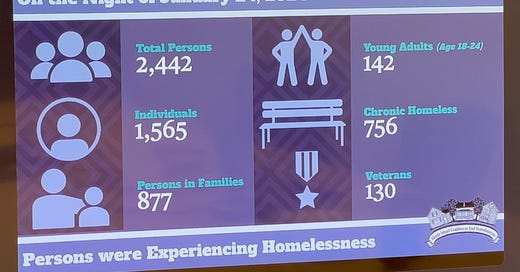



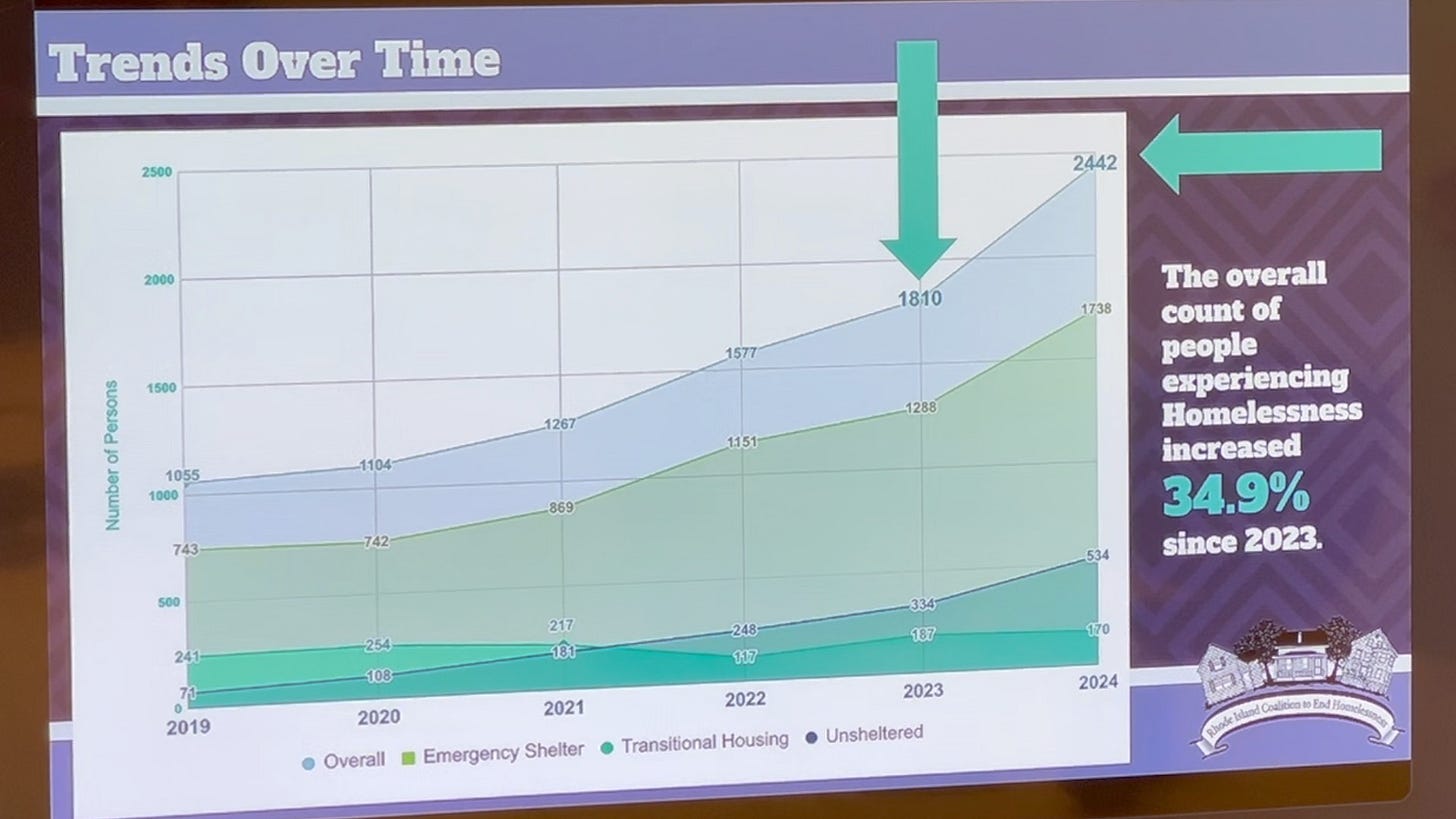
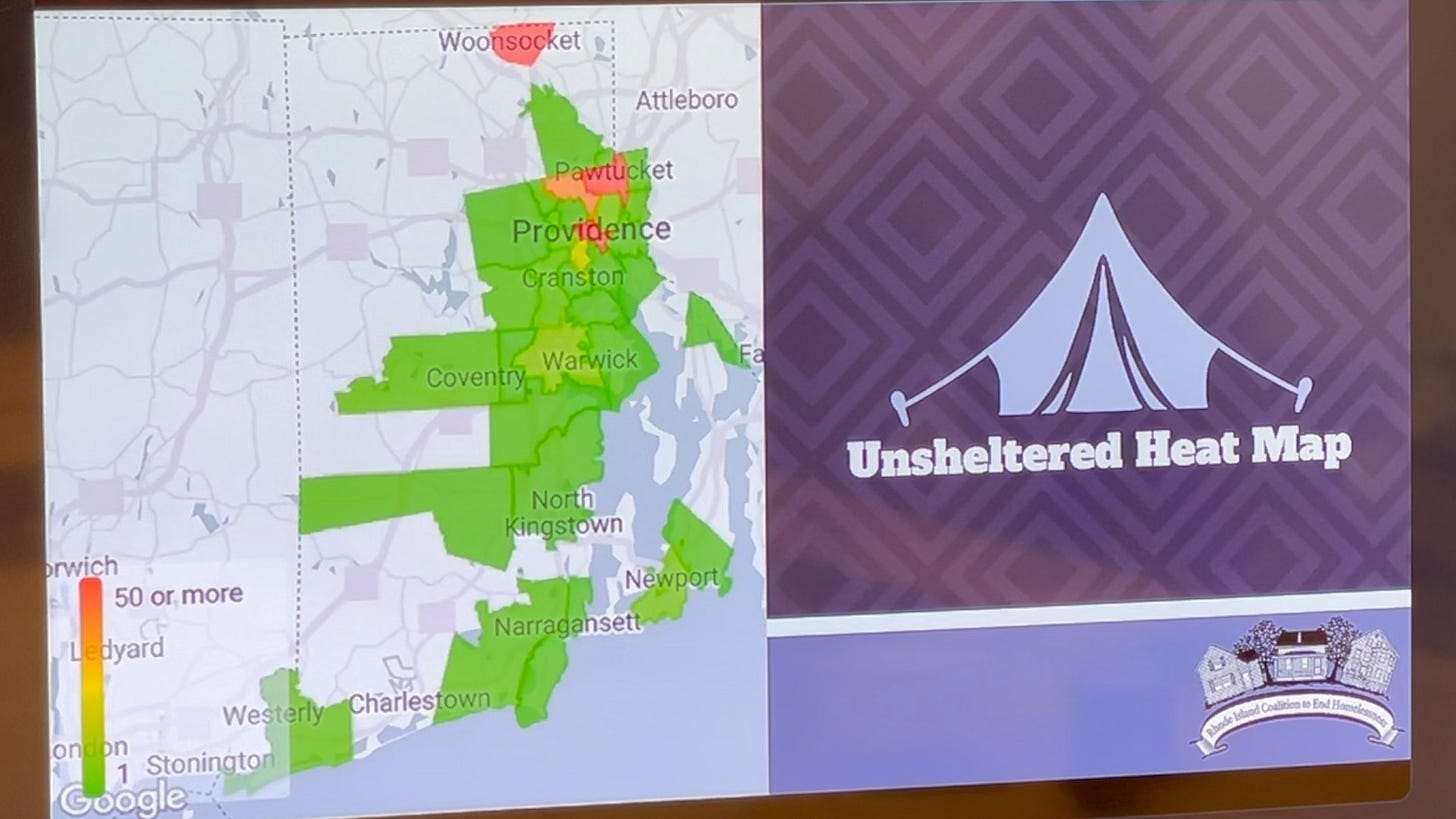
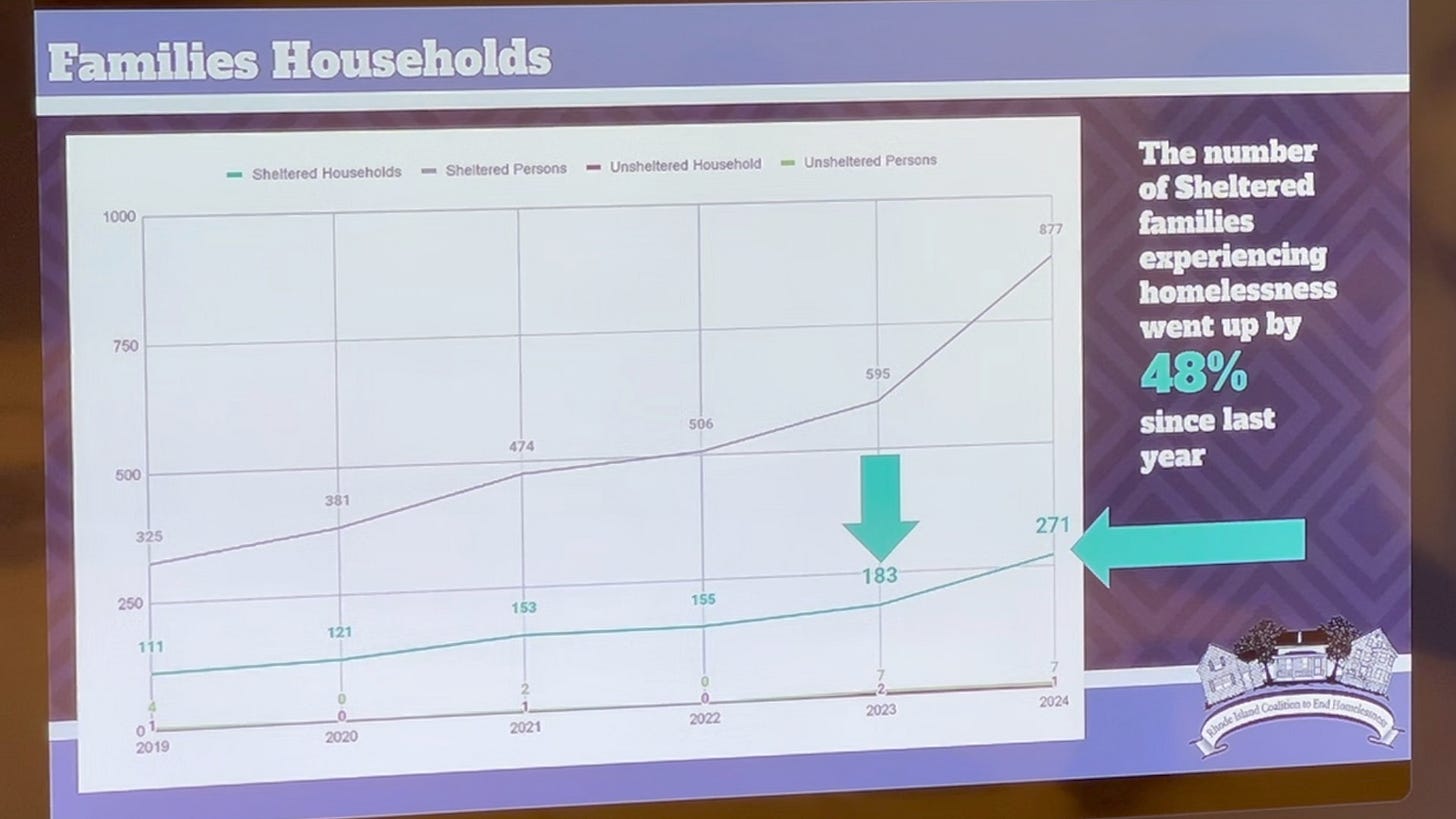
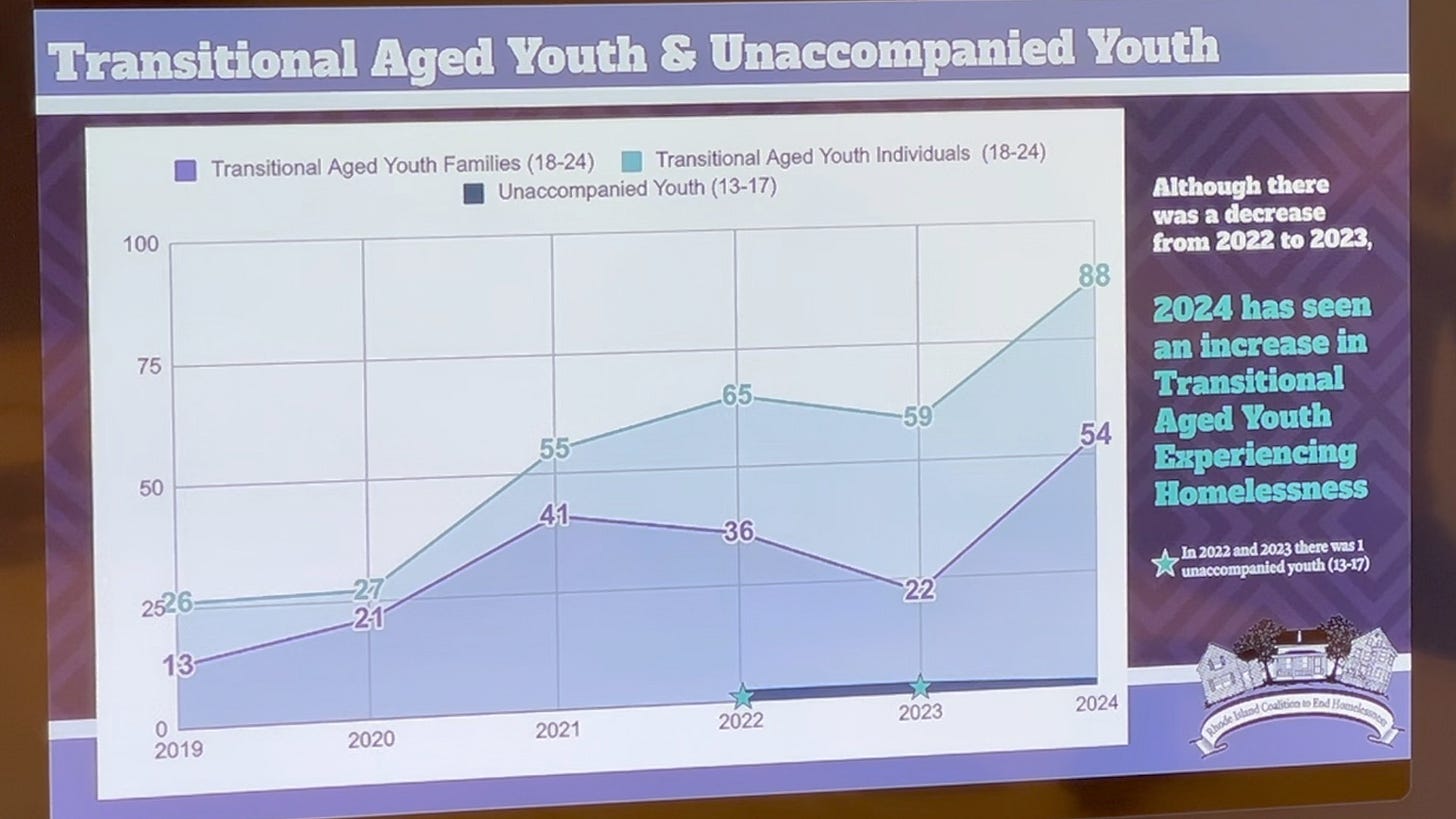
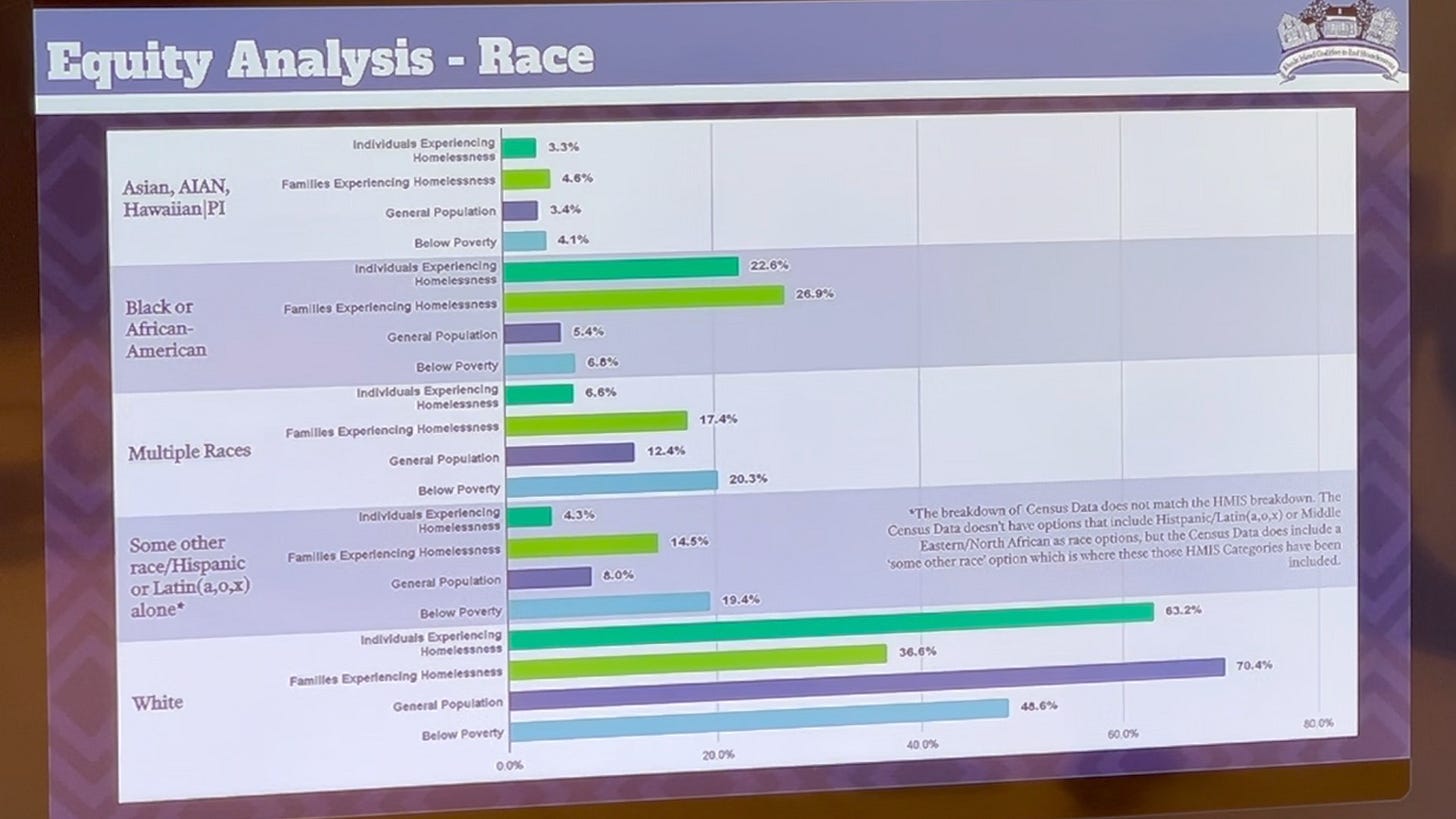

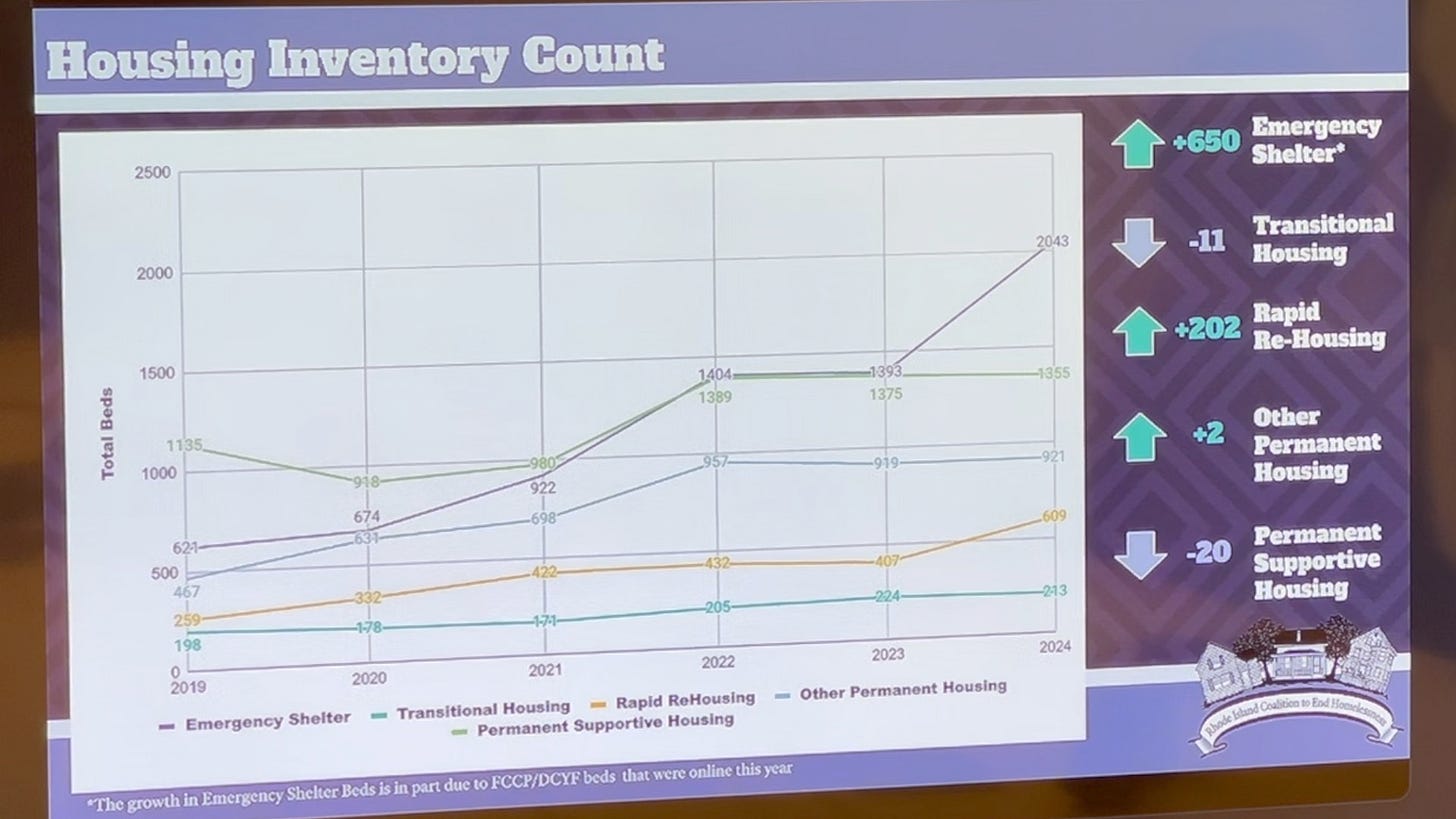
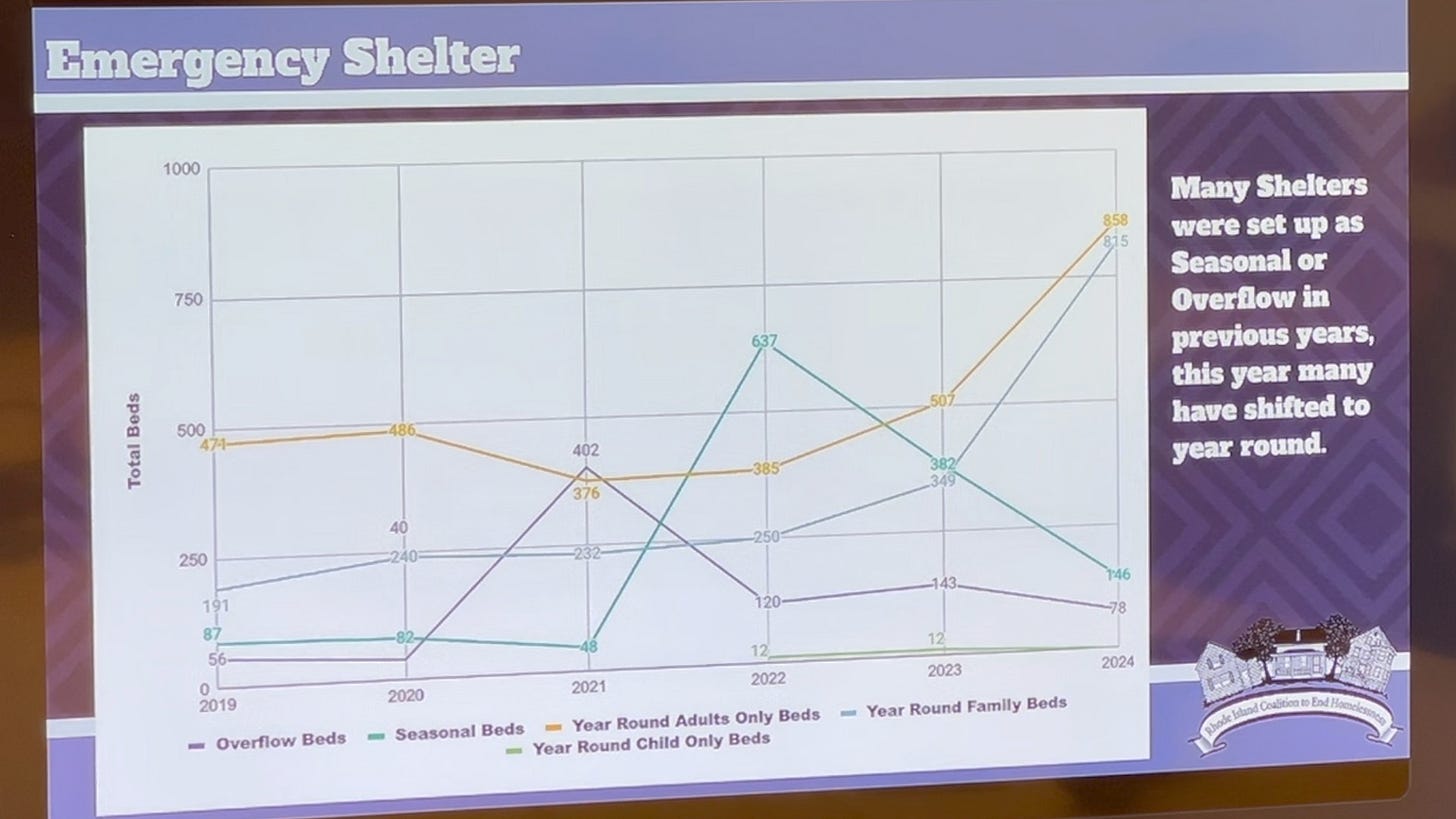
Wow!!!!! That's a word salad!
All that research.... And it's out of touch, politically correct and USELESS!
But......there appears to money to gain and "nothing to see here"!